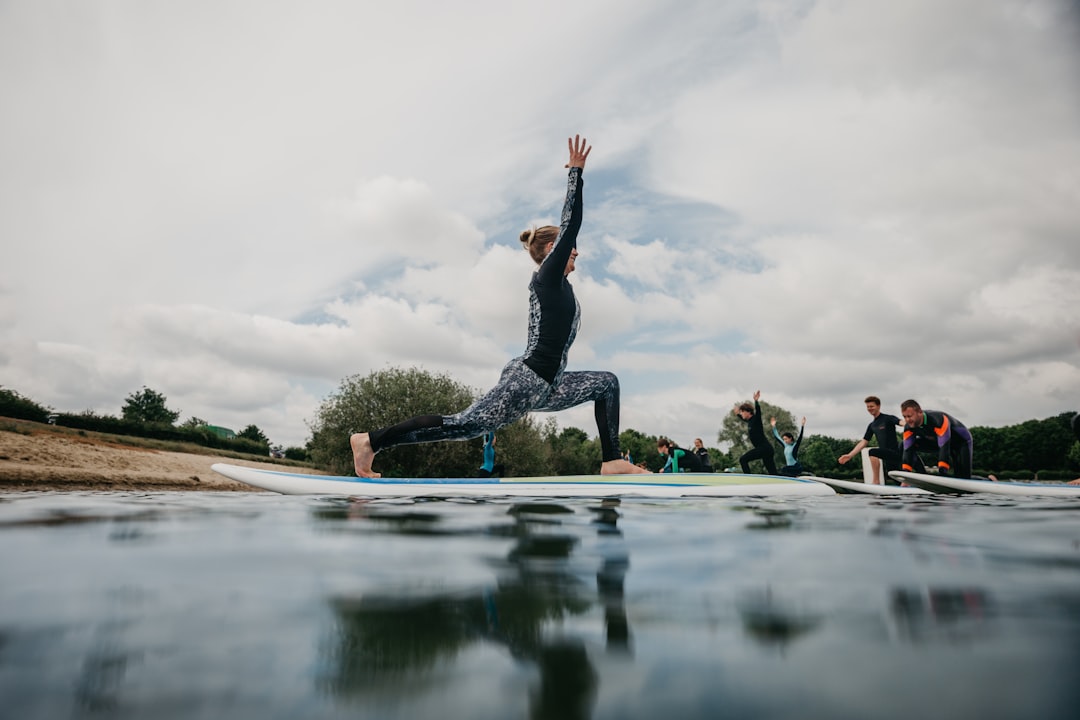When you decide to undergo laser hair removal, it’s essential to grasp how this procedure affects your skin. The laser targets hair follicles, delivering concentrated light energy that destroys them while leaving the surrounding skin largely unharmed. However, the process can lead to temporary side effects such as redness, swelling, and sensitivity.
You may notice that your skin feels warm or tender immediately after the treatment, akin to a mild sunburn. This reaction is typically short-lived, but understanding these effects can help you prepare for your post-treatment routine. Moreover, the skin’s response to laser hair removal can vary based on your skin type and the area being treated.
For instance, areas with thinner skin may react more intensely than those with thicker skin. It’s crucial to recognize that while most side effects are mild and resolve within a few hours to a few days, some individuals may experience more pronounced reactions. Being aware of these potential outcomes allows you to take appropriate measures to care for your skin and ensure a smooth recovery process.
Key Takeaways
- Laser hair removal can cause temporary redness, swelling, and sensitivity in the treated area
- Before exercising after laser hair removal, it’s important to avoid hot showers, saunas, and excessive sun exposure
- Recommended post-laser hair removal exercise regimen includes low-impact activities like walking, yoga, and light stretching
- To minimize discomfort during exercise after laser hair removal, wear loose-fitting clothing and avoid excessive sweating
- Hydration and nutrition are crucial for optimal healing and recovery after laser hair removal; avoid alcohol and caffeine, and drink plenty of water
Precautions to Take Before Exercising After Laser Hair Removal
Wait Before Exercising
It’s recommended to wait at least 24 to 48 hours after your laser treatment before engaging in any strenuous physical activity. This waiting period allows your skin to recover from the immediate effects of the laser, reducing the risk of irritation or complications during exercise.
Assess Your Skin
Before exercising, assess how your skin feels. If you notice any lingering sensitivity or discomfort, it may be best to postpone your workout.
Listen to Your Body
Listen to your body; if it’s telling you to take it easy, heed that advice. You might also want to consult with your dermatologist or the professional who performed the laser treatment for personalized recommendations based on your specific situation.
Recommended Post-Laser Hair Removal Exercise Regimen

Once you’ve allowed sufficient time for your skin to recover, you can gradually reintroduce exercise into your routine. Start with low-impact activities such as walking or gentle yoga. These exercises promote blood circulation without putting excessive strain on your skin.
Walking is particularly beneficial as it allows you to maintain an active lifestyle while minimizing the risk of irritation. Gentle yoga can also help stretch and relax your muscles without causing undue stress on sensitive areas. As you become more comfortable, you can slowly incorporate moderate exercises like cycling or swimming.
However, be cautious with swimming pools or hot tubs, as chlorine and heat can irritate freshly treated skin. Always rinse off immediately after swimming and apply a soothing moisturizer afterward. Remember that the goal is to maintain an active lifestyle while being mindful of your skin’s condition.
Gradually increasing the intensity of your workouts will help you find a balance between staying fit and allowing your skin to heal properly.
Tips for Minimizing Discomfort During Exercise After Laser Hair Removal
| Tip | Description |
|---|---|
| Wear Loose Clothing | Choose breathable, loose-fitting clothing to avoid friction and irritation on the treated area. |
| Avoid Sun Exposure | Avoid direct sun exposure on the treated area to prevent skin irritation and damage. |
| Avoid Hot Showers | Avoid hot showers or baths immediately after treatment to prevent irritation and discomfort. |
| Use Gentle Cleansers | Use gentle, non-abrasive cleansers to clean the treated area to avoid irritation. |
| Avoid Intense Exercise | Avoid intense exercise or activities that may cause excessive sweating and friction on the treated area. |
To make your post-laser hair removal exercise experience as comfortable as possible, consider implementing a few strategies. First, wear loose-fitting clothing made from breathable fabrics. Tight clothing can rub against sensitive areas, leading to increased discomfort and irritation.
Opt for materials like cotton or moisture-wicking fabrics that allow your skin to breathe while keeping you cool during workouts. Additionally, pay attention to the temperature of your workout environment. Exercising in a cooler space can help minimize sweating and irritation on treated areas.
If you’re working out outdoors, try to choose times when temperatures are milder, such as early morning or late evening. If you do find yourself feeling uncomfortable during exercise, take breaks as needed and allow your body to cool down before continuing. Listening to your body is key; if something doesn’t feel right, don’t hesitate to stop and reassess.
Hydration and Nutrition for Optimal Healing and Recovery
Hydration plays a crucial role in your recovery after laser hair removal, especially when you’re exercising. Drinking plenty of water helps keep your skin hydrated from within, promoting healing and reducing the likelihood of dryness or irritation. Aim for at least eight glasses of water a day, and consider increasing this amount if you’re engaging in physical activity that causes you to sweat more than usual.
In addition to hydration, focusing on a balanced diet rich in vitamins and minerals can significantly aid in your recovery process. Foods high in antioxidants, such as berries, leafy greens, and nuts, can help combat inflammation and support skin health. Incorporating omega-3 fatty acids found in fish or flaxseeds can also promote healing by reducing inflammation in the body.
By prioritizing both hydration and nutrition, you’ll create an optimal environment for your skin to recover effectively after laser hair removal.
Avoiding Sun Exposure and Protecting the Skin During Outdoor Exercise
After undergoing laser hair removal, protecting your skin from sun exposure is paramount. The treated areas are particularly sensitive to UV rays, which can lead to pigmentation changes or even burns if exposed too soon after treatment. If you plan on exercising outdoors, make sure to apply a broad-spectrum sunscreen with an SPF of at least 30 on all exposed areas of skin.
Reapply every two hours or more frequently if you’re sweating heavily. In addition to sunscreen, consider wearing protective clothing such as long sleeves or wide-brimmed hats when exercising outside. This added layer of protection can shield your sensitive skin from harmful UV rays while allowing you to enjoy outdoor activities safely.
If possible, try to schedule outdoor workouts during times when the sun is less intense, such as early morning or late afternoon. By taking these precautions seriously, you’ll help safeguard your skin’s health while still enjoying the benefits of outdoor exercise.
Incorporating Gentle Skincare and Cooling Techniques into Your Post-Laser Hair Removal Exercise Routine
Integrating gentle skincare into your post-laser hair removal routine is essential for maintaining healthy skin while exercising. After each workout, cleanse your skin with a mild, fragrance-free cleanser to remove sweat and impurities without causing irritation. Avoid using harsh scrubs or exfoliants for at least a week following treatment; instead, focus on soothing products that will help calm any redness or sensitivity.
Cooling techniques can also be beneficial after exercising post-laser hair removal. Consider using a cold compress or ice pack wrapped in a cloth on treated areas for short periods after workouts to reduce inflammation and soothe any discomfort. Aloe vera gel is another excellent option; its natural cooling properties can provide relief while promoting healing.
By incorporating these gentle skincare practices into your routine, you’ll support your skin’s recovery while enjoying an active lifestyle.
Signs to Watch for and When to Consult Your Dermatologist After Exercising Post-Laser Hair Removal
As you navigate your post-laser hair removal exercise routine, it’s crucial to be vigilant about any signs that may indicate complications or adverse reactions. If you notice excessive redness that persists beyond a few days, blistering, or any signs of infection such as pus or increased pain, it’s essential to consult your dermatologist promptly. These symptoms could indicate that something isn’t right and may require professional intervention.
Additionally, if you experience prolonged discomfort during or after exercise that doesn’t improve with rest or cooling techniques, don’t hesitate to reach out for advice. Your dermatologist can provide tailored recommendations based on your specific situation and help ensure that you’re on the right track for recovery. Remember that prioritizing your skin’s health is paramount; being proactive about any concerns will ultimately lead to better outcomes in both healing and maintaining an active lifestyle post-laser hair removal.
After undergoing laser hair removal, it is important to follow proper aftercare instructions to ensure the best results. One crucial aspect of aftercare is incorporating exercise into your routine. Exercise can help improve circulation, which can aid in the healing process and reduce the risk of complications. To learn more about the benefits of exercise after laser hair removal, check out this informative article on inlaserhairremoval.com.
FAQs
What is laser hair removal aftercare exercise?
Laser hair removal aftercare exercise refers to the physical activities and movements that should be avoided or modified after undergoing a laser hair removal treatment to ensure proper healing and optimal results.
Why is it important to consider aftercare exercise after laser hair removal?
Aftercare exercise is important after laser hair removal to prevent complications such as skin irritation, burns, or changes in pigmentation. It also helps to promote proper healing and reduce the risk of adverse effects.
What types of exercise should be avoided after laser hair removal?
High-impact activities such as running, jumping, or heavy weightlifting should be avoided after laser hair removal. Additionally, activities that cause excessive sweating or friction on the treated area should also be avoided.
How long should I wait before resuming regular exercise after laser hair removal?
It is recommended to wait at least 24-48 hours before resuming regular exercise after laser hair removal. However, this may vary depending on the individual’s skin sensitivity and the specific instructions provided by the laser hair removal technician.
Are there any specific aftercare exercises recommended after laser hair removal?
Gentle, low-impact exercises such as walking, yoga, or light stretching are generally recommended after laser hair removal. These activities help to promote blood circulation and aid in the healing process without putting excessive strain on the treated area.
What other aftercare measures should be taken in conjunction with exercise after laser hair removal?
In addition to modifying exercise, it is important to follow all aftercare instructions provided by the laser hair removal technician, including avoiding sun exposure, using recommended skincare products, and keeping the treated area clean and moisturized.





